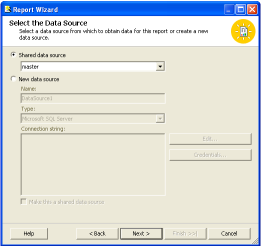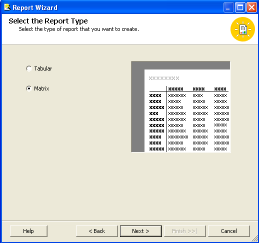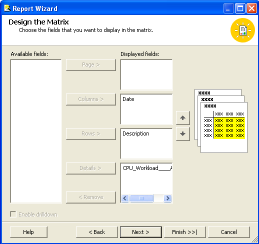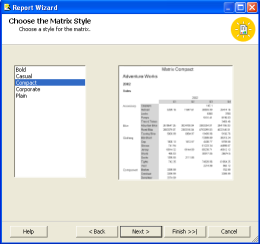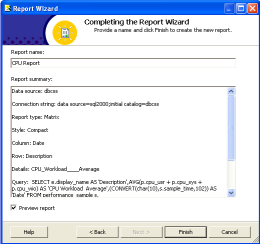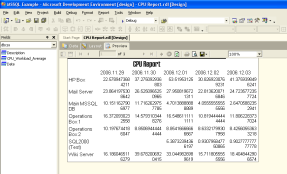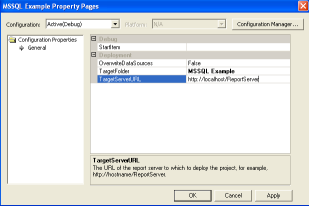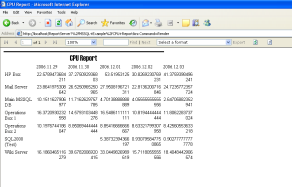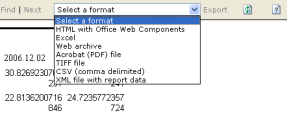...
Table of Contents
Overview
Although up.time Uptime Infrastructure Monitor has powerful reporting features, you may want to generate reports in a custom format with a specific set of user-defined data. Microsoft Reporting Services allows you to take data from an MS SQL Server DataStore and use that data to create a report that addresses your specific needs.
...
This article assumes that you have installed Microsoft Reporting Services and its pre-requisitesprerequisites:
- Internet Information Server (IIS) with ASP.NET
- SQL Server
- Visual Studio .NET
Please also refer to Running up.time on Uptime with an MS SQL Server Database.
...
Setting up a Database Connection
...
- In Microsoft Visual Studio .NET, right-click Reports and choose Add New Report.
The Report Wizard starts.
- Click Next.
- Select Shared data source and then select the database from which you are retrieving data.
- Click Next.
Enter the following query string:
Code Block language sql SELECT e.display_name AS 'Description', AVG(p.cpu_usr + p.cpu_sys + p.cpu_wio)
AS 'CPU Workload Average',(CONVERT(char(10),s.sample_time,102)) AS 'Date'FROM performance_sample s,
eperformance_aggregate p, entity
ide WHERE s.id = p.sample_
idid AND e.entity_id = s.uptimehost_
2006id AND s.sample_time > '
20062013.11.29' AND s.sample_time < DATEADD(day,5,'
name2013.11.29') GROUP BY (convert(char(10),s.sample_time,102)), e.display_
name ORDER BY (convert(char(10),s.sample_time,102)), e.display_name;
This example will report on the CPU workload average for all systems over the five day period from 2006-11-29 to 2006-12-03 (simply change the dates or the interval as required).
- Click Next after you change the range to suit your needs.
- Choose the Matrix option and then click Next.
The Design the Matrix window appears, which enables you to change the way in which data is arranged in the report.
In this example:
- Description is moved to the Rows field.
- Date is moved to the Columns field.
- CPU Workload Average is moved to the Details field.
- Click Next.
- In the Choose Matrix Style window, select Compact.
The Design the Matrix window appears.
- Select to display all of the fields in the report and then click Next.
- Click the Preview Report check box at the bottom of the page.
- Click Finish to generate a preview of the report.
...
- In Microsoft Visual Studio .NET, access the Solutions Explorer to open Solution Explorer.
- Right click the current project and select Properties.
- In the Properties window, change the value of
TargetServerURLto the URL where Reporting Services has been installed. For example,http://localhost/ReportServer. - Click OK.
- In the Solutions Explorer, click Debug / Start to publish the report.
After the report has been published, your default Web browser will automatically open in the directory in which the report was published. Click on the file name of the report to open it.
- You can also export the report from your web browser by selecting a format from the dropdown list, as shown below:
...
| Note | ||
|---|---|---|
| ||
Published reports may not render properly in web browsers other than Internet Explorer. If, for example, you have set your default browser to Firefox and the report does not open properly after you have published it, copy and paste the URL of the report into Internet Explorer. You can also view the report by navigating to the Report Manager URL in Internet Explorer. By default, the URL is http://localhost/Reports/Pages/Folder.aspx. |
